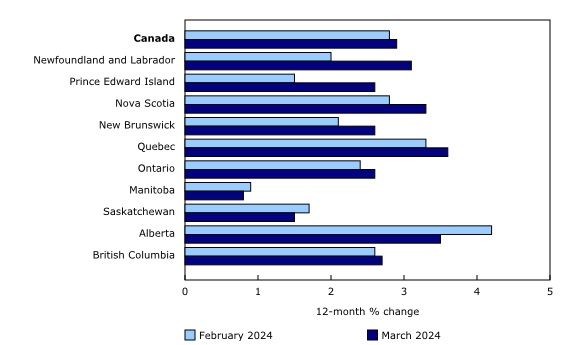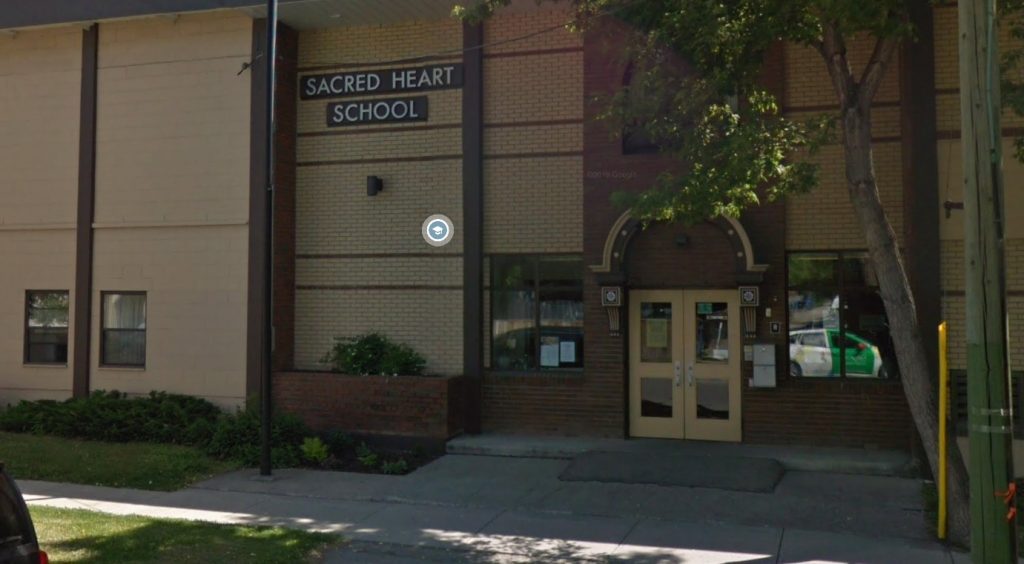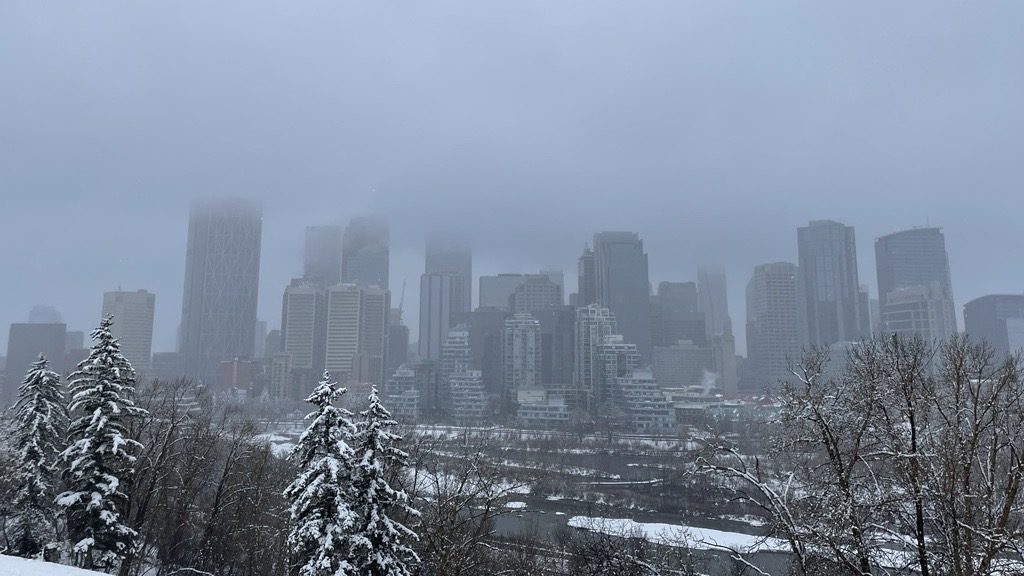Inflation rate increased to 2.9% in March as gas prices rose

Posted Apr 16, 2024 2:00 am.
Last Updated Apr 16, 2024 11:46 am.
Statistics Canada says the annual inflation rate ticked higher in March than in February, boosted by higher gasoline prices.
The agency says its consumer price index for March was up 2.9 per cent compared with a year ago, up from a 2.8 per cent year-over-year increase in February. It was the first time this year that the headline inflation rate went up month to month.
The increase came as gasoline prices rose 4.5 per cent compared with a year earlier, helped higher by an increase in global oil prices.
“Higher global prices for crude oil stemmed from supply concerns amid geopolitical conflict and continued voluntary production cuts, leading to higher prices at the pump,” Statistics Canada said in its update.
Excluding gasoline, Statistics Canada said the overall annual inflation rate for March was 2.8 per cent, down from 2.9 per cent in February.
The agency said that on a monthly basis, gas prices rose faster in Western Canada in March than in the eastern parts of the country.
Inflation on groceries continued to slow in March, rising just 1.9 per cent compared with a year earlier, down from February’s annual rate of 2.4 per cent.
It also said prices for services continued to rise in March, which was driven by air transportation and rent. These costs outpaced the price for goods, which slowed on a yearly basis in March compared with February.
Meanwhile, shelter prices continued to contribute to overall inflation as they were up 6.5 per cent compared with a year ago.
Mortgage interest costs in March rose 25.4 per cent on a year-over-year basis, while rent prices in March increased 8.5 per cent compared with a year earlier.
“Among other factors, a higher interest rate environment, which can create barriers to homeownership, put upward pressure on the index,” the agency said.
However, taking gas prices, mortgage interest costs and rent prices out of the equation, core inflation cooled — a key signal for the Bank of Canada on interest rates.
“Measures of underlying inflationary pressures are suggesting that there’s been further normalization towards the Bank of Canada’s target. So when the governor of the central bank said that he wants to see more of what he saw in January and February, this is exactly what he was talking about,” Royce Mendes, managing director and head of macro strategy at Desjardins, told 680 News Radio Toronto.
The central bank kept its key interest rate target on hold last week at five per cent, but said it is “within the realm of possibilities” that it could cut interest rates in June.
The central bank has said it is seeing what it needs to see but needs to see it for longer to be confident that progress toward price stability will be sustained.
Across Canada, the agency said inflation rose at a faster pace in seven provinces.
“Prices rose at a faster rate in March compared with February in Atlantic Canada primarily due to an acceleration in prices for fuel oil and other fuels.”

The inflation report comes as the federal government prepares to release its budget on Tuesday afternoon.
With files from Mike Eppel of 680 News Radio Toronto










